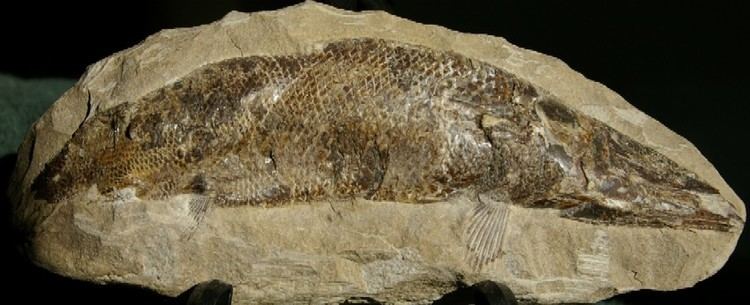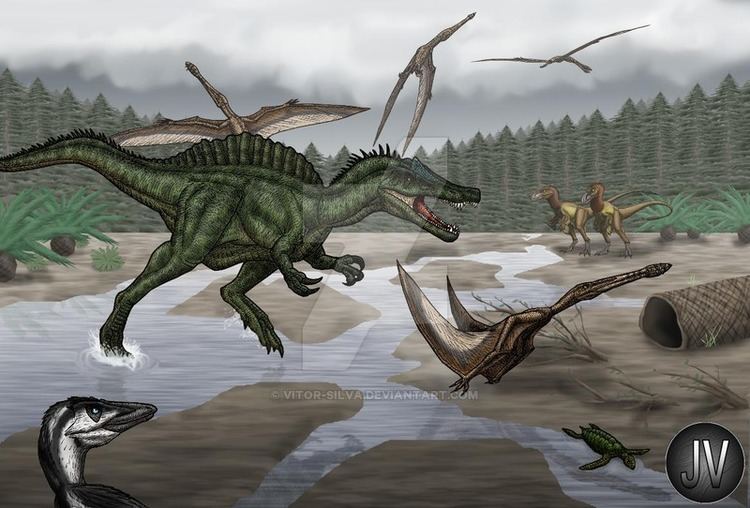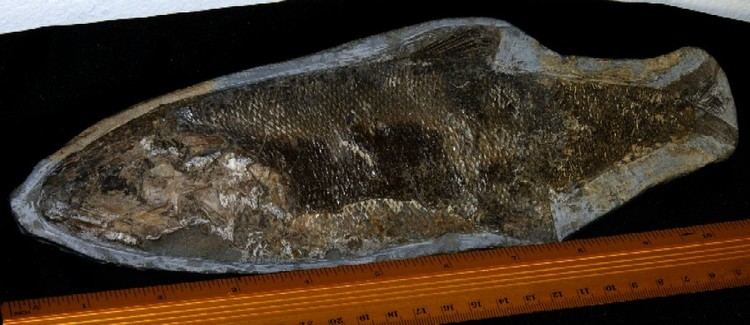Type Geological formation Country Brazil | Unit of Araripina Group Overlies Crato Formation | |
 | ||
Santana formation angaturama
The Santana Formation is a geologic Lagerstätte (undisturbed fossil accumulation) in northeastern Brazil's Araripe Basin where the states of Pernambuco, Piauí and Ceará come together. The geological formation, named after the village of Santana do Cariri, lies at the base of the Araripe Plateau. It was discovered by Johann Baptist von Spix in 1819. The strata were laid down between the late Early Cretaceous and early Late Cretaceous in a shallow inland sea. At that time, the South Atlantic was opening up in a long narrow shallow sea.
Contents

The Santana Formation earns the designation of Lagerstätte due to an exceedingly well preserved and diverse fossil faunal assemblage. Some 25 species of fossil fishes are often found with stomach contents preserved, enabling paleontologists to study predator–prey relationships in this ecosystem. There are also fine examples of pterosaurs, reptiles and amphibians, invertebrates (particularly insects), and plants. Even dinosaurs are represented (Spinosauridae, Tyrannosauroidea, Compsognathidae). The unusual taphonomy of the site resulted in limestone accretions that formed nodules around dead organisms, preserving even soft parts of their anatomy. In preservation, the nodules are etched away with acid, and the fossils often prepared by the transfer technique.

Local mining activities for cement and construction damage the sites. Trade in illegally collected fossils has sprung up in the last decade, driven by the remarkable state of preservation and beauty of these fossils and amounting to a considerable local industry. An urgent preservation program is being called for by paleontologists.

In addition, the weathering of Santana Formation rocks has contributed soil conditions unlike elsewhere in the region. The Araripe manakin (Antilophia bokermanni) is a very rare bird that was discovered only in the late 20th century; it is not known from anywhere outside the characteristic forest that grows on the Chapada do Araripe soils formed ultimately from Santana Formation rocks.

Geology and dating

The Crato Formation has often historically been considered the lowest member of the Santana Formation (or, alternatively, the Araripina Formation). The Crato Member is the product of a single phase, where complicated sequence of sediment strata reflect changeable conditions in the opening sea. The age of the Santana Formation has been controversial, though most workers have agreed that it lies on or near the Aptian-Albian boundary, about 112 million years ago. Nevertheless, a Cenomanian age cannot be ruled out.

The extent of the Crato unit and its relationship to the Santana Formation had long been ill defined. It was not until a 2007 volume on the unit by Martill, Bechly and Loveridge that the Crato Formation was given a formal type locality, and was formally made a distinct formation separate from the Santana, which is about 10 Ma younger.
Dinosaurs
Indeterminate remains of non-avian theropods, avialans, ornithischians, and possibly oviraptorosaurs have been found in Estado do Ceara, Brazil.
Fish

